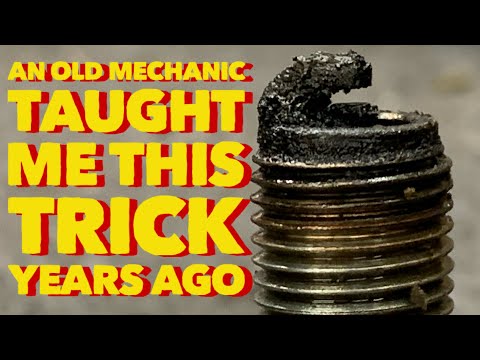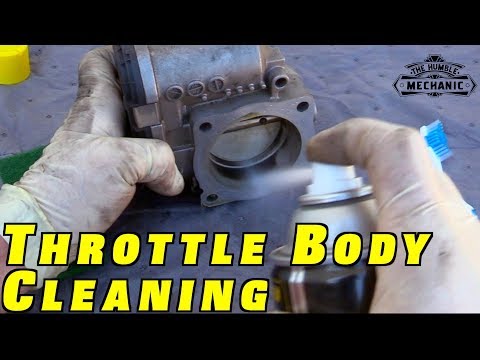
It’s easy sometimes to take your car for granted right up until you hop in, turn the key, and find that something has gone wrong. While a misfiring engine or a dead battery are serious problems in their own right, one of the most distressing and frustrating vehicular problems is when a car cranks, but the engine won’t start.
The unfortunate truth here is that many things can cause a car to crank without starting or completely turning over the motor. This includes fouled spark plugs, a clog in the fuel system, or a dying, but not yet dead battery. preventing it from starting
Time is of the essence when the engine turns on when trying to start but won’t run on its own. The longer you keep cranking it, the more likely you will completely drain the battery. Not to mention the real risk of flooding the engine or damaging the car’s starter motor.
It helps to keep a cool head while methodically diagnosing why your car turns over normally, but the doesn’t start or run.
This guide will discuss common reasons of “crank-no-start” issue and what you can do to troubleshoot and fix the problem to get your car running again.
8 Reasons Why Your Engine Cranks But The Car Won’t Start
There are many potential reasons why a car engine might crank but not start, and some of these are relatively easy to fix. Here are few things to check if your car engine cranks but fails to start.
1: Your Car Has a Dying Battery
All lead-acid car batteries have a finite lifespan of roughly 3 to 5 years. Though this average window of time can be cut short if the car is frequently exposed to extreme heat and deeply cold weather. A battery can have just enough charge to run the lights and let the car crank but not start.
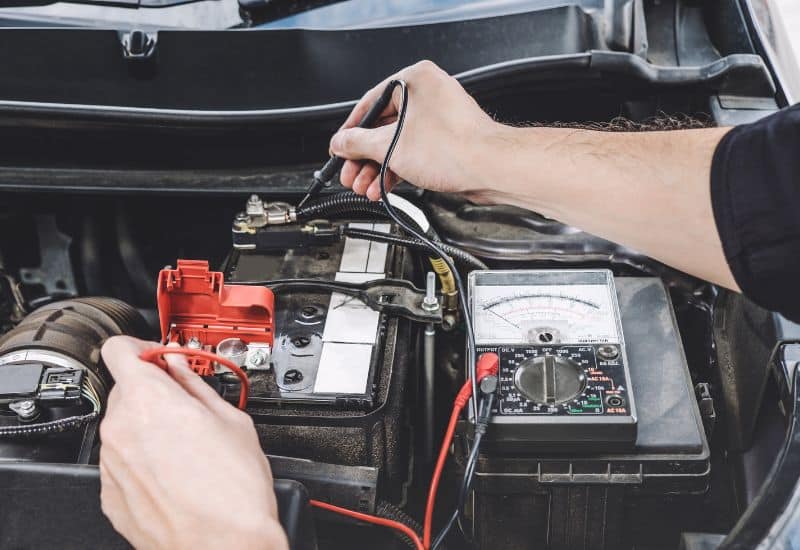
This could be because the battery itself is compromised to the point where it can’t hold onto enough cold cranking amps to turn the engine over. It might also be that your car’s alternator is going out and it isn’t capable of recharging the battery enough to let it start the car’s engine.
It’s even possible for this to be a double whammy, where the battery has slipped past its prime, and an alternator problem is trying to dig it an early grave. The problem here is that a lot of car battery and alternator problems manifest as the same symptoms.
Common Symptoms of a Bad Battery
If your car is displaying two or more of the following symptoms, you should strongly suspect that it is either a battery problem and/or an alternator problem.
How to Test If It’s Battery or Alternator
When a car cranks but won’t start, the symptoms of a battery and/or alternator can easily mask each other.
The following two simple tests can help you determine if your car is cranking but not starting due to a problem with the battery or the alternator. Even if it turns out to be neither, the information you can take from the experience might help you troubleshoot other potential problems that we’ll touch on next.
The easiest way is to put a voltmeter or a multimeter set to read voltage on the battery to see if it gives you a reading between 10 to 12.6 Volts. If it does, then it’s not the battery.
If the battery is reading below 10 Volts, then might be that the battery can’t hold a charge or a dying alternator isn’t sufficiently charging the battery all the way when you drive.
If you can manage to get the car started for a short period of time, you can also try removing the positive terminal on the battery. If the car stops, it’s most likely a problem with the alternator.
How to Deal with a Battery Problem
If you’ve concluded that it’s most likely a low battery that’s keeping the car from starting, the easiest answer is to try to jump-start the car.
If you can’t find someone to jump you, hooking the battery up to a battery charger for an hour or two should give it sufficient charge to crank over until it starts.
Make Sure to Assess the Alternator!
Let’s say you get the car started by jumping it or putting a battery charger on the battery. The natural instinct here is to throw your arms up in celebration and scurry off on your way. I have personally made this mistake in the past!
The problem is, if the alternator is dead or dying and it caused the battery problem, you will get a little way down the road, and its inability to recharge the battery will eventually kill the engine. Then you’re left stranded, often in a terrible situation, and your only hope is to call a tow truck.
So, once you get the battery to crank the car over and you’ve got it running, take a few minutes to disconnect the positive terminal on the battery. If the car labors, stalls, and dies then the alternator is a factor to some degree. It’s either dead or dying.
If you get the car started again and try to drive away, it will leave you stranded somewhere between point A and point B.
2: You Have a Starter Motor Problem
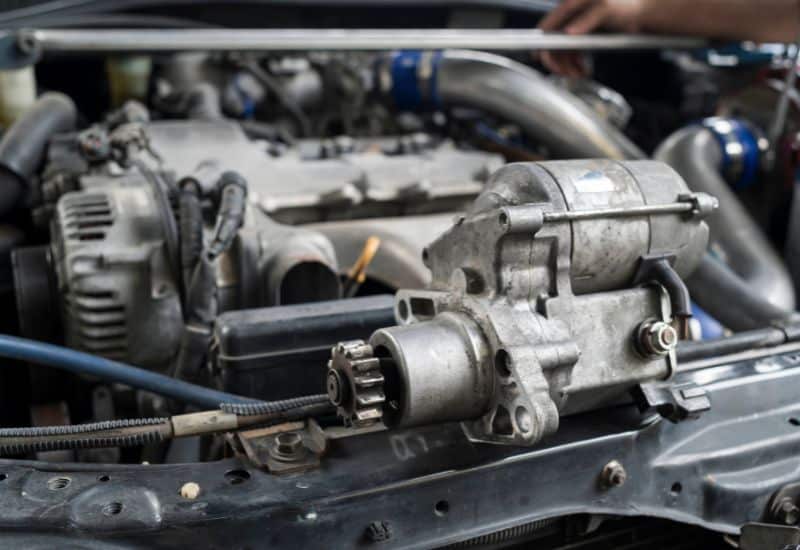
The starter motor plays a critical role starter in initiating the internal combustion process. It is made up of a solenoid, and a small gear with a series of tightly interlocking teeth.
When you turn your key the internal solenoid in the starter engages relays that allow electrical current from the battery to robustly turn the starter motor’s gear.
This engages the engine’s flywheel, which creates rotation that draws in fuel as well as air into the cylinders. At that point, the spark from the spark plugs ignites the engine’s internal combustion process which fires up the car’s engine and runs on its own without any more assistance from the starter motor.
Though it’s possible as time goes on for the teeth on the starter motor to degrade as the gear grinds away on the engine’s flywheel. It’s also possible for the internal solenoid in the car to degrade and lose its ability to complete the electrical circuit.
These issues are even more likely to occur if your car frequently runs hot or you have a bad habit of cranking the engine for an extended period of time to start it.
Sometimes a problem with another part of the fuel system or the spark plugs can cause the car to hesitate to start. This leads to you naturally grinding the starter motor harder and longer.
As time goes on, this unchecked problem elsewhere in the engine actually accelerates the gradual death of your starter motor as well.
Symptoms of a Bad Starter Motor
If you notice the following symptoms, chances are good that there is a problem with the starter motor. Though it might not be just the starter motor alone.
How to Test for a Bad Starter Motor
There are a few different ways you can test your car’s starter motor to confirm it is the problem. A lot of auto parts stores like Auto Zone, NAPA, and O’Reilly will test your starter for free.
You can take the starter out or bring your car to them and they will test it for you to confirm that the starter is indeed the problem.
If you don’t have time for that you can improvise a home test to determine if a bad starter is a reason why your car cranks but won’t start. Though you do need to make sure that you have eliminated a battery problem, or that you know for certain that the battery has sufficient charge.
The last thing you want to do is mistakenly test your starter motor, only to find out later it was the battery that was causing the malfunction, and the starter was fine all along.
Once you’ve eliminated a battery problem and/or any other electrical gremlins you can test your starter motor via the following steps.
If the car finally does start, then it’s likely that your starter is going out, and tapping on it temporarily freed the stuck solenoid. This means you’ve bought yourself time, the starter is not fixed and you can expect the problem to recur shortly!
In a moment like this, you should drive straight to the auto parts store to have them test it or take it to your mechanic.
3: Your Car Has Fouled or Bad Spark Plugs
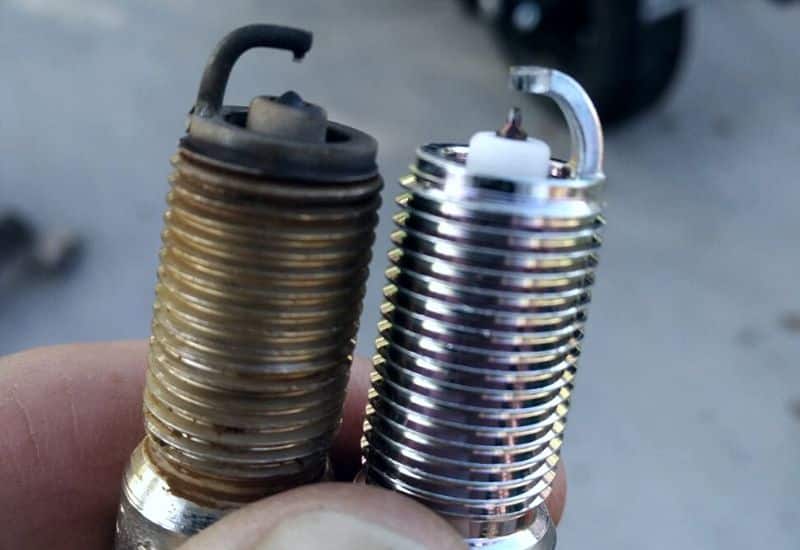
Once you’ve moved past battery and starter problems, the next most likely reason why your car cranks but won’t start is a problem with the spark plugs. This is even more likely to be an issue if you are past due on your tune-up, or you’ve been lax about replacing your fuel filter.
The spark plugs are absolutely critical for initiating and maintaining the internal combustion process. If one or multiple spark plugs are fouled, damaged, or otherwise bad your car might crank relentlessly without starting until the engine is severely flooded or the battery runs flat.
Signs that Your Car Has Bad Spark Plugs:
How to Test for Bad Spark Plugs
The easiest way to tell if bad spark plugs are causing your car to crank but not start is to put a code reader on the car’s engine. This will tell you which cylinders have been having a problem. Especially if you’ve been experiencing misfires.

You can then physically inspect the questionable spark plugs by removing them. This requires a ratchet or a box wrench, and perhaps a torque wrench. If you have an older Ford from 2008 or earlier, I highly recommend investing in a spark plug removal tool!
You can then use the following steps to inspect your car’s spark plugs.
How to Clean Dirty Or Faulty Spark Plugs
Let’s say that you find one or two dirty plugs, but they still look to be in good working order.
In a time like this, you might be able to clean them in a matter of minutes to get you back on the road, without all the time of completely replacing all your plugs or going through a tune-up.
It’s probably not a permanent fix, but it can get you back on your way for the day.
There are two methods for cleaning fouled spark plugs. The best is to use a plug cleaner spray, according to the instructions on the can. This won’t affect the physical surface of the plug. If you don’t have any on hand, and you need to get on your way, you can turn to the “Abrasive Method.”
You can clean modestly dirty spark plugs using the abrasive method via the following steps.
Note this is just a quick fix to get you on your way. Ideally, you would do this on a Monday, and then plan to replace the fouled plugs by the coming weekend.
4: You Have a Fuel System Problem
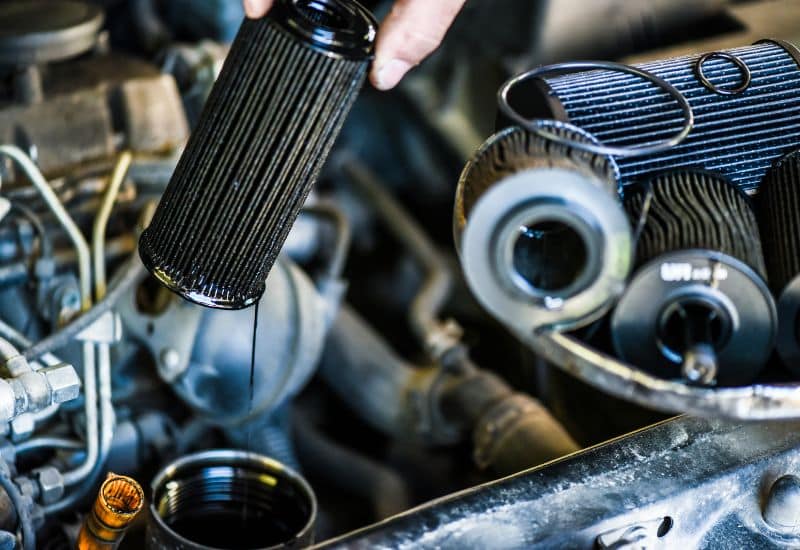
A car’s fuel system is sophisticated and essential for supporting the internal combustion process.
It relies on the fuel filter as the very first line of defense against particulate matter, tank varnish, and other materials in the fuel tank getting into the fuel pump or further down the fuel line toward the engine.
If it’s been more than two to three years or 30,000 miles since you had your fuel filter replaced, the reason your car is cranks but won’t start might be due to a clogged fuel filter.
This is even more likely to be the case if you have a bad habit of running your fuel tank desperately low, and refueling only at the fuel warning light.
As deposits build up in your car’s fuel filter it makes it harder and harder to fuel to get to the combustion chamber inside the pistons. It can even affect the performance of the fuel filter, which compounds the cranking issue as well as accelerates its eventual death.
Signs of a Bad Fuel Filter
There are a few common signs of a badly clogged fuel filter or failing fuel pump to watch out for. This includes:
How to Deal with a Bad Fuel Filter
While there are some DIY bush fixes for dealing with a badly clogged fuel filter, the easiest way to get your car cranking again is to replace the bad filter as soon as possible.
If you have the tools and the mechanical sympathy, you can usually replace a fuel filter yourself in under an hour.
The cost for just the fuel filter will only run you between $10 to $70.
You can usually get it done at one of those rapid oil change centers for between$50 and $175.
5: Your Car Might Have a Blown Fuse or Relay
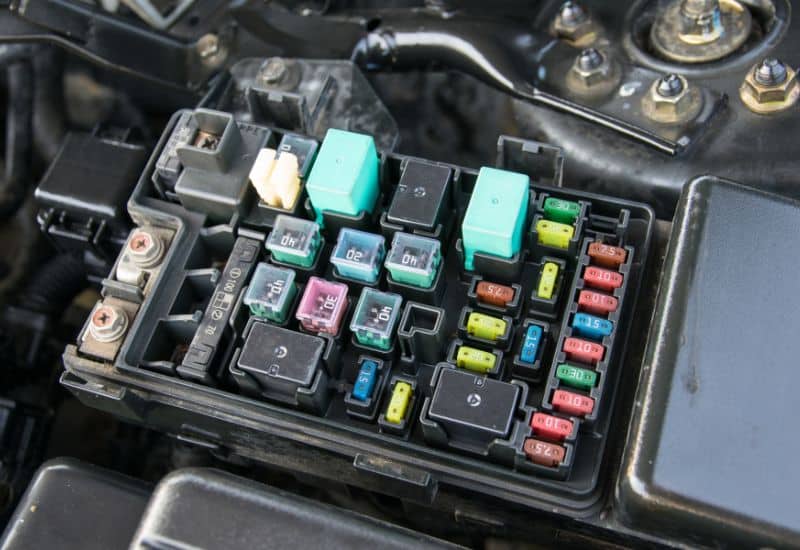
Modern-day cars rely on a slew of fuses and relays to make sure essential engine components all work together in concert.
If one of these fuses blows or a relay goes bad, it can prevent the necessary current from getting to something like the fuel pump or the starter.
While it’s not overly common, it is possible for a blown fuse or relay powering one of these components to cause the car to crank but not start.
How to Check for a Blow Fuse or Relay
Some of the prime fuses and relays that can cause your car to crank but not start include.
How to Test a Relay
A bad relay can be hard to tell by sight alone. One simple trick to test a relay is to find one with a similar amperage number that you feel confident works. Then swap it out in place of the suspected bad relay. You can then test to see if that worked by starting the car.
How to Fix a Bad Fuse or Relay
Auto parts stores sell a wide range of common relays and fuses to handle most minor car electrical problems. If you need to get your car started, and you’ve figured out that it’s a relay or fuse, you can do the same swap trick mentioned in the relay test to drive directly to the auto parts store. Just make sure that they are the same amp rating!
Then install the replacement to make sure your car has all the correct relays and fuses. The last thing you want to do is drive around with a defunct fuse or relay in some other critical system of the car.
The cost for a replacement automotive fuse is around $3 to $5 per fuse. Though I would recommend getting one of the $25 multi-packs with common auto fuses to keep on hand if/when you need one again.
The cost of a placement automotive relay can range from $12 to as much as $50 depending on the make and model of the vehicle. Still, this is something you can do yourself to get your car back on the road, without paying labor costs to a mechanic.
6: Your Car has a Bad or Clogged Throttle Body
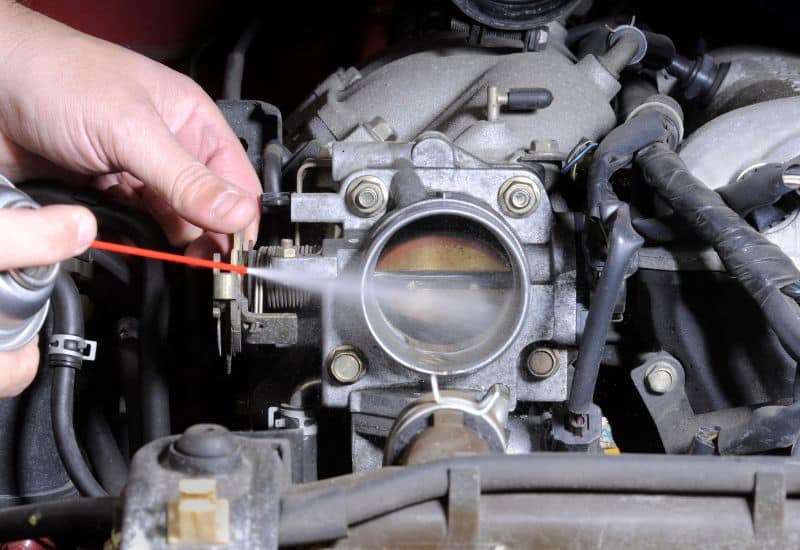
The throttle body on a fuel-injected car helps deliver consistent airflow to the engine. Time, low-quality fuel, and running the car with a dirty air filter can all contribute to a problem known as Coking.
This causes grime and sooty deposits to buildup on the throttle body fouling it. When it doesn’t perform properly these deposits can affect the fuel-to-air ratio resulting in a car that cranks but won’t start.
Luckily, it’s easy to check the throttle body as it’s typically located between the air cleaner or air filter and the engine’s intake manifold.
While you’re at it, you should also take a few extra minutes to make sure that your car’s air filter is clean and it isn’t clogged by something like a secretly deposited mouse nest.
Symptoms of a Car with a Throttle Body Problem
How to Clean a Dirty Throttle Body
If your throttle body has gummed up dark deposits, a simple cleaning might be all you need to get your car to turn over properly. Though you’ll need some throttle body or carburetor cleaner and the following steps.
If the throttle body was dirty and you didn’t have a replacement air filter, I recommend installing a fresh filter as soon as possible.
This won’t prevent future coking issues in the throttle body, but it will go a long way toward making sure your car has the air it needs for robust combustion when starting and accelerating.
7: Your Car Has a Compression Problem
Every cylinder in the engine block needs sufficient compression to support continuous internal combustion. Different size cylinders have different compression ratios with a maximum cylinder volume and a minimum cylinder volume that are evoked with each piston stroke.
Any time one of your car’s cylinders has low compression, from something such as air leaks caused by bad piston rings it will limit the amount of power that cylinder can deliver to the crankshaft. This can affect engine performance to varying degrees, including causing the car to crank but won’t start.
A lot of common engine compression problems are linked to either a loose or broken timing belt or chain. This is even more likely to be an issue if your car is overheated and you’re trying to start it again.
Signs of an Engine Compression Problem
There are a few different ways that an engine compression problem can show up in a car that cranks but won’t start. This includes:
How to Test a Compression Problem
On the face of it, the easiest way to test and prove a compression problem is causing your car to crank but won’t start is to simply hook it up to an automotive compression gauge. This is a special tool that’s inserted directly into the spark plug hole of the engine while the flywheel is rotating.
It will give you a pressure reading that will give you a better indication of the condition of a cylinder, piston, and rings. You’ll have to look up the compression ratio of your make and model either in the repair guide or online.
How to Fix an Engine Compression Problem
Unfortunately, there is no quick fix for an engine compression problem. Most of the time you need to replace a piston, the compromised piston ring, or the affected valve. There might also be issues with the camshaft, head gasket, or timing chain that also need to be repaired. These are very challenging repairs for a home mechanic to attempt to tackle.
Having a compression problem professionally repaired typically costs between $750 to $2,500 or more depending on the make, model, and any other problems that are affecting engine performance.
8: The Anti-Theft System Has Been Activated Accidentally
Some cars have anti-theft systems that lock the engine anytime it encounters a suspected vehicle theft attempt. Sometimes these anti-theft measures are sensitive and will lock the engine out for the smallest of conditions. When this happens a red anti-theft light turns on the dash or the driver’s console.
I once grabbed the wrong set of keys running out the door to drive to Thanksgiving dinner, I put them in the ignition and tried to turn the key and the anti-theft system engaged, making us even later! Luckily I was able to reset the system and start my truck in under 15 minutes.
How to Deactivate the Anti-Theft System
Different makes and models of vehicles have different requirements to deactivate or reset the system. They’re made to not be easy, to deter would-be car thieves. You’ll find specific information in your owner’s manual or via a quick google search that includes the specific type and year of your car.
Though a lot of times the easiest answer is to remove the car’s positive terminal from the battery and wait for a solid 5 to 10 minutes. This will let any power lingering in capacitors in the system to dissipate. Then check to make sure that the battery in the key fob is still good.
At that point, you reconnect the positive terminal and start the car with the correct key. Check the anti-theft light on the dash or the console and attempt to start the car normally.
Frequently Asked Questions
How Long Does It Take to Replace a Clogged Fuel Filter?
Replacing a clogged fuel filter is something you should be able to do yourself in less than an hour. It’s a cheap repair that will ensure your engine has the fuel it needs. If you don’t have the time or aren’t mechanically inclined to do so at the moment, you can usually get a new fuel filter installed anywhere you can get your oil changed.
Will An Auto Parts Store Install a New Battery?
If you found out that your battery is what’s causing your car to crank but not start, most auto parts stores will test it and help you swap it out. They’ll even recycle the battery. The one exception here is if the positive (Red) wire is severely corroded or damaged to the point that the wire itself needs to be replaced.
This isn’t the sort of repair you can just improvise in an auto part store’s parking lot. If you don’t have the time to do it yourself, you can expect a professional mechanic to charge you around $75 to $100 to replace the wire and install the new battery.
Is It Safe to Drive with a Bad Alternator?
If your car is cranking but won’t start due to a bad alternator failing to charge the battery, you will be able to get the car started again by jumping it. However, you’ll be dealing with limited time, and unless the auto parts store is less than a mile away, I wouldn’t risk driving a car with a bad alternator, even to get the replacement parts.
Conclusion
There are a lot of different reasons why your car cranks but won’t start. Some of them are the sort of thing you can rectify within an hour or less, to let you get back on the road and through the rest of your day. Others can be much more serious and might even require the services of a professional mechanic.
If your battery is low on charge, it might not have the cold cranking amps necessary to get the engine to turn over. Testing the battery with a multi-meter will help you determine if it’s a battery or an unsafe alternator problem. As long as you’re in the area, you can move to check the fuses and relays to see if some part of the ignition system is prevented from getting the charge it needs to initiate internal combustion.
Should the car’s electrical system check out, you can quickly start tapping the starter motor’s solenoid. This might take three or four tries where the engine cranks but won’t start, then suddenly on the fifth try, it turns over like normal! As long as you’re under the hood, check the throttle body and the air filter.
From here all the problems that could be causing the car to crank but not start are going to take up to an hour or more. Replacing the fuel filter and cleaning a suspected bad spark plug or two doesn’t take all that long and is something you can do on your own.
More major issues like a compression problem will mean your car is down for days, and you might need a professional mechanic to help with the final repair.

Written By
Jason Farrell
Jason Farrell is a certified master technician, the editor of Mechanic’s Diary in Pittsburgh, Pennsylvania. He is ASE (Automotive Service Excellence) certified and earned a Bachelor’s Degree in Automotive Technology from Pittsburg State University. With nearly 18 prior years of experience in the automotive field, he has extensive knowledge about Domestic, European, and other foreign makes and models of cars and light trucks. Jason’s experience working as a technician and service manager at dealerships, gave him the experience and know-how of most aspects of inspection, diagnosis, and repair from engine and drivability to electrical, HVAC, brakes, steering and suspension and everything in between.

